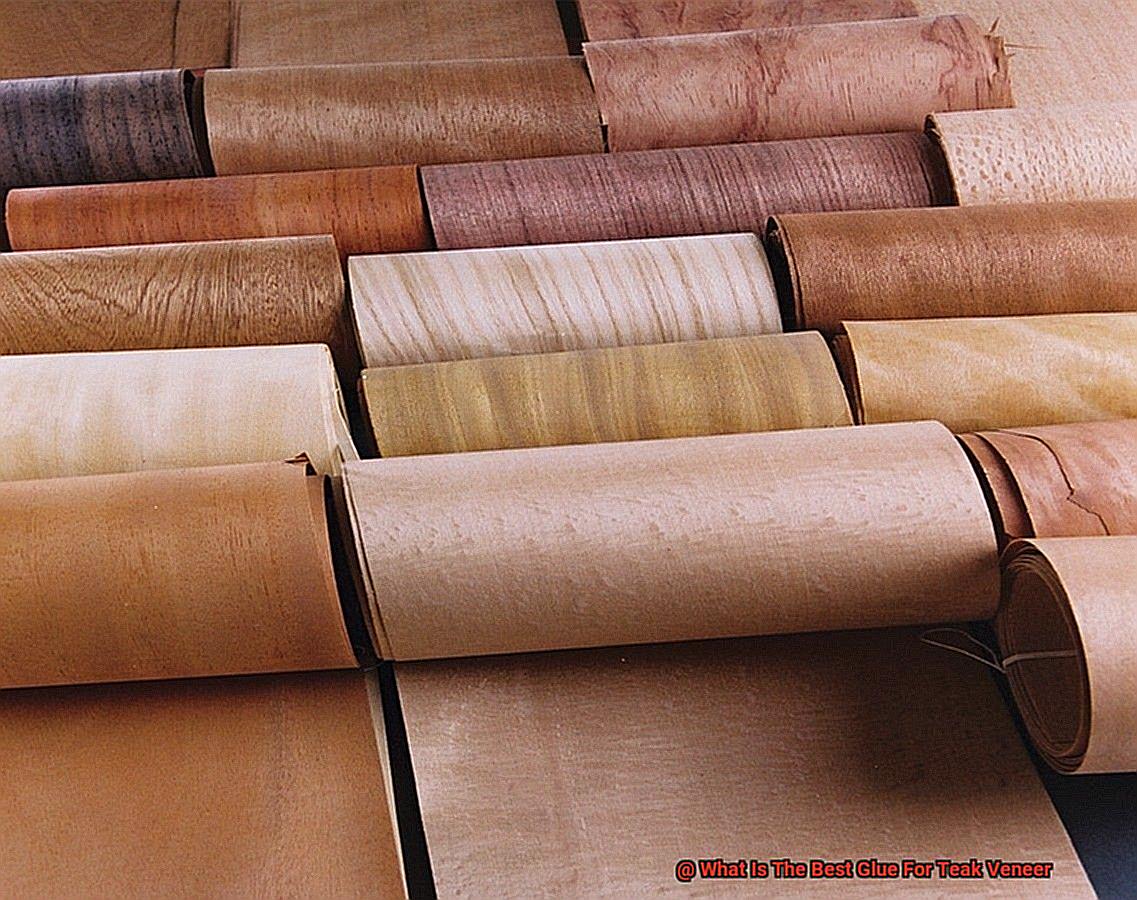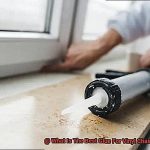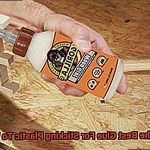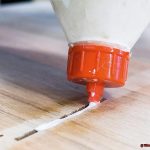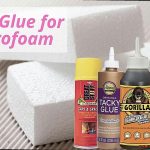Hey there. Welcome to our blog, where we’re all about teak veneer and the glue that makes it stick. We know how awesome teak can be – it’s beautiful, versatile, and perfect for furniture restoration or creating something totally new.
But here’s the thing: not all glues are created equal when it comes to teak veneer. Some just won’t cut it, leaving you with gaps and a less-than-stellar finish. That’s why finding the best glue for teak veneer is key to getting that durable, professional look.
So, which glue should you choose? In this blog post, we’ll dive into different adhesive options – the good, the bad, and everything in between. We’ll also spill some insider tips and tricks to make your gluing process smooth sailing.
If you want your teak veneer project to shine brighter than a disco ball, then keep reading. We’ve got all the info you need right here.
What is Teak Veneer?
Contents
- 1 What is Teak Veneer?
- 2 Advantages of Using Glue for Teak Veneer
- 3 Types of Glues Suitable for Teak Veneer
- 4 Epoxy Resin: An Ideal Choice for Teak Veneer
- 5 Polyurethane Glue: A Versatile Option for Bonding Teak Veneer
- 6 Contact Adhesive: An Immediate Bonding Solution
- 7 Considerations When Choosing the Best Glue for Teak Veneer
- 8 Conclusion
Teak veneer, a thin layer of exquisite teak wood delicately applied to a substrate material, has become a popular choice for adding elegance and durability to furniture and other woodworking projects. Let’s explore the world of teak veneer, including its creation process, advantages, and maintenance. We’ll also delve into the topic of selecting the best glue for teak veneer to ensure a strong and long-lasting bond.
Crafted through a meticulous process known as veneering, teak veneer begins with obtaining thin slices or peels of teak wood from logs. These slices preserve the natural beauty and distinctive grain patterns that make teak wood so coveted. Next, they are expertly bonded onto a substrate material such as plywood or MDF using high-quality adhesive. The result is a seamless and visually appealing surface that showcases the richness and elegance of teak wood.
Teak veneer offers numerous advantages that make it a popular choice among craftsmen and homeowners:
- Cost-effectiveness: Solid teak wood can be expensive due to its scarcity, but teak veneer offers an affordable alternative without compromising on aesthetics.
- Stability and Durability: The substrate material provides structural support, making teak veneer less prone to warping or cracking caused by changes in temperature and humidity.
- Natural Beauty: Teak veneer showcases the rich golden-brown color and prominent grain patterns inherent in teak wood, lending a touch of elegance to any project.
- Maintenance: Cleaning teak veneer is relatively easy – regular use of mild soap and water will keep it looking clean and fresh.
When it comes to selecting the best glue for teak veneer, there are several options to consider:
- Epoxy Resin: Known for its excellent adhesion properties, epoxy resin forms a strong and durable bond that can withstand moisture, heat, and environmental factors.
- Polyurethane Glue: This versatile adhesive offers excellent bonding strength and flexibility, making it ideal for teak veneer’s unique characteristics.
- Contact Adhesive: Providing an immediate and strong bond upon contact, contact adhesive is a popular choice, but it requires careful application following the manufacturer’s instructions.
Advantages of Using Glue for Teak Veneer
Teak veneer is the answer. This thin layer of teak wood can transform any surface into a work of art. And to ensure that your teak veneer stays securely in place, glue is the perfect choice.
Gluing teak veneer offers a multitude of advantages that will make your project easier and guarantee a beautiful and long-lasting result. Let’s dive into the world of glue and explore why it’s the go-to option for teak veneer.
First and foremost, glue creates a strong bond. Teak wood is dense and oily, making it a bit tricky to achieve a secure attachment. But fear not. Glue specially formulated for wood veneers has excellent adhesion properties, ensuring that your teak veneer stays firmly in place for years to come.
But what good is glue if it’s challenging to apply? Luckily, most wood glues come in liquid form, making them easy to spread evenly on the surface. This precise application ensures that the glue covers the entire area without any gaps or bubbles. Plus, some glues have extended open times, giving you more time to adjust and position the veneer before it sets.
Another advantage of using glue is its flexibility. Whether you’re working on flat surfaces or wrapping the veneer around curved edges, glue can handle it all. Its versatility allows craftsmen and DIY enthusiasts to create intricate designs and achieve a seamless finish that will leave everyone in awe.
Gluing teak veneer also enhances the overall aesthetics of your project. The adhesive is applied evenly across the surface, eliminating the need for visible fasteners or nails that could disrupt the natural beauty of the wood. This creates a sleek and polished appearance, allowing the teak veneer to shine and highlight its unique grain patterns.
One of the greatest advantages of using glue for teak veneer is its non-invasive nature. Unlike nailing or screwing, glue eliminates the need for drilling holes or using mechanical fasteners that could potentially damage the veneer or the substrate. This non-invasive approach preserves the aesthetics of your project while minimizing the risk of splitting or cracking the delicate teak veneer.
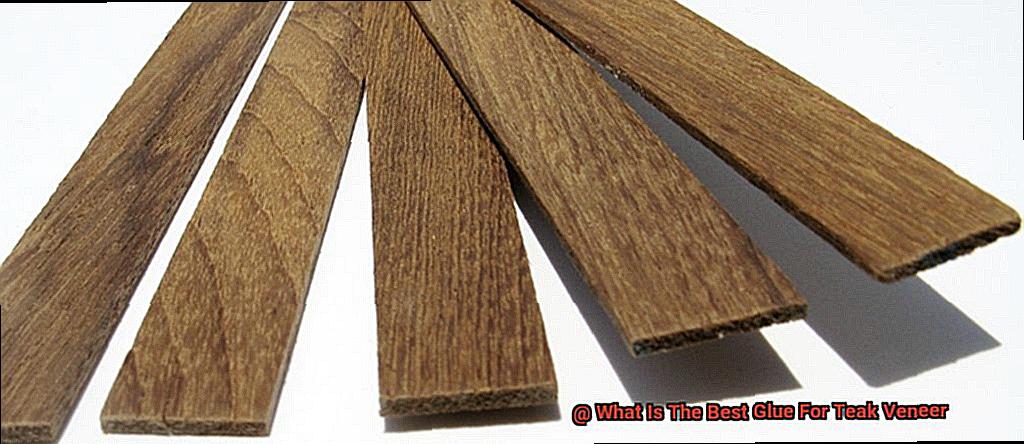
Last but not least, glue designed for teak veneer offers moisture resistance. Teak wood is known for its natural resistance to moisture, making it a popular choice for outdoor applications. When you use glue specifically formulated for teak veneer, you can rest assured that the bond will remain strong even in humid or wet conditions. Say goodbye to warping or delaminating.
Types of Glues Suitable for Teak Veneer
Teak veneer is a stunning choice for adding elegance and sophistication to woodworking projects. However, bonding teak veneer requires the use of specific glues due to its unique characteristics. In this comprehensive guide, we will explore five types of glues suitable for teak veneer, providing detailed information to help you make an informed decision.
Epoxy Resin: The Strength of a Titan
When it comes to bonding teak veneer, epoxy resin is a top choice. Its exceptional bonding strength and resistance to moisture and chemicals make it ideal for both interior and exterior applications. With epoxy resin, you can have peace of mind knowing that your teak veneer will stay securely in place, even in harsh conditions.
Polyurethane Glue: Flexibility at Its Finest
For teak veneer, polyurethane glue is another excellent option. Its strong bonding capabilities and flexibility allow it to withstand the natural movements of the wood without compromising the adhesive bond. This makes it perfect for projects that require durability, such as outdoor furniture or boats.
Contact Cement: Instant Bonding Magic
If you’re seeking a quick and easy solution, contact cement may be your answer. It forms an instant bond when the two surfaces are pressed together, making it ideal for large, flat surfaces like countertops or tabletops. However, keep in mind that contact cement may not provide the same level of bonding strength as epoxy or polyurethane glue.
PVA Glue: The Traditional Choice
Traditional wood glues like PVA glue can also be used for teak veneer. PVA glue offers a strong bond and is easy to work with. However, it may not have the same resistance to moisture or chemicals as epoxy or polyurethane glues. For exterior applications, be sure to choose a waterproof or marine-grade PVA glue.
Consider Your Project’s Specific Needs
When selecting a glue for teak veneer, it’s crucial to consider the specific requirements of your project. Factors such as moisture resistance, durability, and ease of use should guide your decision-making process. Additionally, always follow the manufacturer’s instructions and perform a small test before applying the glue to the entire veneer surface.
Epoxy Resin: An Ideal Choice for Teak Veneer
Look no further than epoxy resin. This superhero of glues is renowned for its exceptional strength and durability, making it the ideal choice for teak veneer.
Teak veneer, a thin layer of teakwood that adds elegance to any surface, requires an adhesive that can handle its beauty and responsibility. Here’s why epoxy resin is the ultimate choice:
- Unyielding Bond: Epoxy resin is like the Hulk of glues, forming an incredibly strong bond that withstands the natural movement and expansion of teakwood. No need to worry about your veneer peeling off anytime soon.
- Moisture Warrior: With its high oil content and natural resistance to moisture, teakwood demands a glue that can stand up to the challenge. Epoxy resin is water-resistant, ensuring your teak veneer stays securely in place despite water or humidity.
- Gap-Filling Wizardry: Imperfections in your teak veneer? No worries. Epoxy resin possesses excellent gap-filling properties, creating a smooth and seamless surface. It’s like a magic eraser for woodworking mishaps.
- Versatile Formulations: Epoxy resin is available in different formulations, such as two-part or one-part epoxy. You can choose the one that suits your project’s specific requirements. Just follow the manufacturer’s instructions for proper mixing and application techniques, and you’re good to go.
Polyurethane Glue: A Versatile Option for Bonding Teak Veneer
When it comes to adding a touch of elegance to furniture, cabinets, and other woodworking projects, teak veneer is a beautiful and popular choice. But what’s the best way to bond teak veneer to your desired substrate? Look no further than polyurethane glue. This versatile adhesive is a superhero when it comes to bonding teak veneer.
One of the key advantages of polyurethane glue is its ability to bond different materials. Whether you’re working with wood, metal, plastic, or even porous surfaces like concrete, polyurethane glue has got you covered. But what sets it apart from other options? Well, it’s all about that chemical reaction. Polyurethane glue forms a strong bond by reacting with moisture in the air or substrate. This means that even if your teak veneer or substrate is a little damp, polyurethane glue will still work its magic and create a durable and long-lasting bond.
Polyurethane glue also has expanding properties that make it an ideal choice for bonding teak veneer. As it cures, the glue expands, filling any gaps between the veneer and the substrate. This not only ensures a solid bond but also helps create a waterproof seal. Yes, you heard that right – polyurethane glue is suitable for both interior and exterior applications, making it a versatile option for bonding teak veneer.
Applying polyurethane glue is a breeze. It typically comes in liquid form and can be easily applied using a brush or roller. Plus, any excess glue can be wiped away with a damp cloth. Just make sure to dampen the surfaces before applying the glue to activate its curing process.
To ensure proper contact between the veneer and the substrate, pressure should be applied once the glue is applied. Clamps or weights can be used to hold the pieces together while the glue cures. The curing time can vary depending on factors like humidity and temperature, so it’s important to follow the manufacturer’s instructions for optimal results.
Contact Adhesive: An Immediate Bonding Solution
When it comes to bonding teak veneer, you need a glue that is not only strong and durable but also offers immediate results. That’s where contact adhesive comes into play. This versatile adhesive is like a superhero for your woodworking projects, providing an instant bond that can withstand even the toughest challenges. In this article, we’ll explore the advantages of using contact adhesive for bonding teak veneer in a professional and engaging manner.
Advantage 1: Instant Bonding Power
Contact adhesive is a game-changer in the glue world, offering the power to bond with just a touch. Unlike other glues that require clamping or drying time, contact adhesive forms a powerful bond the moment it comes into contact with the surfaces to be joined. This advantage proves invaluable for projects that demand quick results or when working with materials that cannot be clamped together.
Advantage 2: Versatility at Its Best
Contact adhesive is a true chameleon in the glue kingdom – it can bond with almost anything. Whether you’re working with wood, metal, plastic, or fabric, this adhesive can get the job done. And when it comes to bonding teak veneer, its versatility shines through. It effectively adheres to both the veneer and the substrate material, ensuring a secure and long-lasting bond.
Advantage 3: Unmatched Strength and Durability
When you’re adding elegance to your furniture or woodworking projects with teak veneer, you want to be sure that it stays in place. That’s where contact adhesive’s strength and durability come into play. Once bonded, this adhesive creates a robust hold that can withstand high levels of stress and strain. No need to worry about your beautiful veneer peeling off.
Advantage 4: Heat and Moisture Resistance
Teak wood is often used in environments where temperatures and humidity levels can be extreme. That’s why it’s crucial to choose a glue that can withstand these conditions. Contact adhesive is up to the task. It offers excellent resistance to heat and moisture, ensuring that your bond remains intact over time. So, whether you’re working on a project for your outdoor patio or a steamy bathroom, contact adhesive has got you covered.
Considerations When Choosing the Best Glue for Teak Veneer
Crafting with teak veneer requires selecting a sidekick glue that can conquer the challenges posed by this dense and oily wood. The right adhesive must possess superior bonding capabilities, endurance against moisture, flexibility, and durability. In this enlightening blog post, we will delve into the crucial considerations to keep in mind when choosing the best glue for your teak veneer project.
Compatibility with Teak Wood:
Teak wood’s unique properties make it a formidable opponent for adhesives. To ensure an unbreakable and long-lasting bond, opt for glues specifically formulated for teak wood. These specialized adhesives penetrate the dense teak fibers, creating a secure and reliable bond.
Waterproof Properties:
Teak is frequently used outdoors and exposed to moisture. It is imperative to select a glue with waterproof properties to safeguard your teak veneer against water damage. This will guarantee its longevity even in wet conditions, ensuring your masterpiece stands tall amidst nature’s challenges.
Strength and Flexibility:
Teak veneer often adorns curved or irregular surfaces, necessitating a glue that can withstand the wood’s natural movement and expansion without compromising its bond. Look for glues that offer both strength and flexibility to accommodate these demands, enabling your project to withstand the test of time.
Drying Time:
Consider the drying time of your chosen adhesive. Quick-drying glues save time, propelling your project forward swiftly. However, for larger or intricate undertakings, longer curing times may be necessary to achieve optimal bonding.
Ease of Application:
Working with glue should be a seamless experience, devoid of any hassles. Seek out glues that spread evenly and smoothly, guaranteeing a robust bond between the teak veneer and substrate. Easy application enables precise placement, minimizing the chances of messy or uneven bonding.
Clean-up and Maintenance:
Nobody desires a sticky mess. Opt for glues that offer hassle-free clean-up options. Some adhesives can be effortlessly removed with water, while others may necessitate solvents or specialized cleaning agents. Consider the ease of maintaining your finished project, ensuring it remains pristine and captivating.
Longevity:
Your teak veneer creation should withstand the ravages of time. Seek out glues renowned for their durability and long-lasting performance. A solid bond capable of enduring years of use is essential for any woodworking project aiming for greatness.
Conclusion
In conclusion, selecting the perfect glue for teak veneer is crucial in achieving a flawless and long-lasting finish. Teak veneer boasts an array of benefits, including its cost-effectiveness, stability, captivating natural beauty, and effortless maintenance. To guarantee a robust bond that stands the test of time, there are several adhesive options suitable for teak veneer.
Epoxy resin emerges as the ultimate choice for teak veneer due to its exceptional strength, resistance to moisture, ability to fill gaps seamlessly, and versatility in different formulations. An alternative worth considering is polyurethane glue renowned for its flexibility and ability to bond diverse materials flawlessly. For immediate bonding with versatility across various surfaces, contact adhesive proves handy but may not offer the same level of strength as epoxy or polyurethane glues. Traditional wood glues like PVA glue can also be utilized for teak veneer projects; however, they may lack the same resistance to moisture or chemicals.
When deciding on the best glue for teak veneer, take into account factors such as compatibility with teak wood, waterproof properties, strength and flexibility, drying time, ease of application and clean-up/maintenance convenience, as well as longevity.
Ultimately, by opting for the ideal adhesive for your teak veneer endeavor, you can rest assured knowing that your project will boast a secure attachment that endures over time while showcasing the innate beauty of this remarkable wood.

